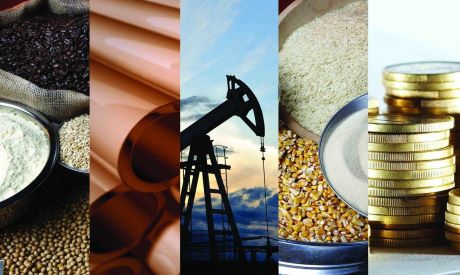War, protectionism and wild weather risk stoking food inflation once again
Global commodities
Global food markets are being rocked by a brutal combination of war, protectionism and wild weather, which taken together, risk fanning the flames of global inflation once again. First, war. Since quitting the Black Sea grain initiative last month that gave safe passage to Ukrainian crops, Russia has raised the stakes by targeting ports and export infrastructure, sending wheat and corn prices sharply higher. Second, protectionism. India recently choked off a major chunk of its rice exports to tamp down domestic prices, which has caused a surge in rice prices (India exports ~40% of global rice supplies). Third, wild weather. After an unusual three-year La Niña cycle, an El Niño event emerged in June 2023, and is expected to last into 2024 – El Niño is typically correlated with reduced grain supply and yields, and higher grains prices. The world also recorded its hottest month on record in July 2023, with widespread heatwaves in the Northern Hemisphere also threatening some crops. Combined, the three shocks is set to boost household inflation expectations in emerging markets where food typically comprises ~40% of typical spending on consumer goods and services double the figure for developed markets). That spillover could increase pressure on emerging market central banks to keep interest rates higher for longer, sparking volatility in financial markets priced for rate cuts over the coming months. All in, global inflation may have peaked but it is still far too high – and whilst energy inflation has fallen back, a resurgence in food price inflation, on the back of elevated supply-side risks, is top of mind.
Energy
Crude oil looks well placed to extend gains on further signs that the global market is deficit up as Saudi Arabia holds back substantial voluntary production cuts – prompt, 6 and 12 month timespreads remain in firm backwardation (signalling market tightness). Meanwhile, looming Australian strikes are still not fazing Asian LNG buyers to prepare for potential supply disruptions – both Japan and China, who are major buyers of Australian gas, are sitting on adequate inventories as the winter heating season draws closer.
Base metals
Directional conviction remains bleak across the base metals complex. Absent an end to the global manufacturing slowdown, the demand environment is set to remain a softening risk to balance and upside restraint on prices. The risk going forward is that the duration of the manufacturing downturn extends into 2024, in part owing to the piecemeal pace of Chinese policy easing, alongside the industrial supply chain reverberations from higher for longer rates across developed markets.
Precious metals
Gold has risen to a near one month high to ~USD1,900/oz as bond yields fell following weak US jobs data fuelled speculations that the Fed may pause its rate hikes in September. Speculative positioning suggests that investor sentiment supports gold’s prospects with the outlook that real yields will either decrease or remain stable. In a recent survey, money managers signalled that they are positive on gold prices in 2024, even though risks to a stronger US dollar and even higher US rates linger.
Bulk commodities
The one commodity that should be weakening by China’s worsening property crisis is actually performing well – iron ore has climbed to its highest in a month after a rally that has defied deepening pessimism over China’s debt-laden economy. As we documented last week, we believe it would be wrong to look at this recent iron ore price strength as evidence of a sustainably tightly fundamental path (see here) – Chinese onshore steel demand remains heavily pressured by the lingering early cycle property contraction.
Agriculture
Beyond our agricultural themes Global Commodities section above, the USDA has warned US agricultural producers to be prepared for the effects of Hurricane Idalia (current category 3 hurricane) on crops.
Core indicators
Price performance and forecasts, flows, market positioning, timespreads, futures, inventories, storage and products performance are covered in the report.



